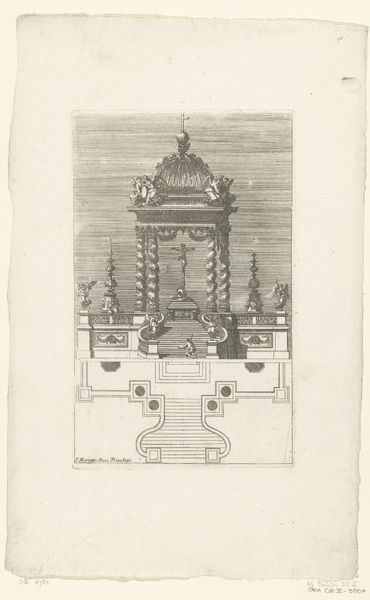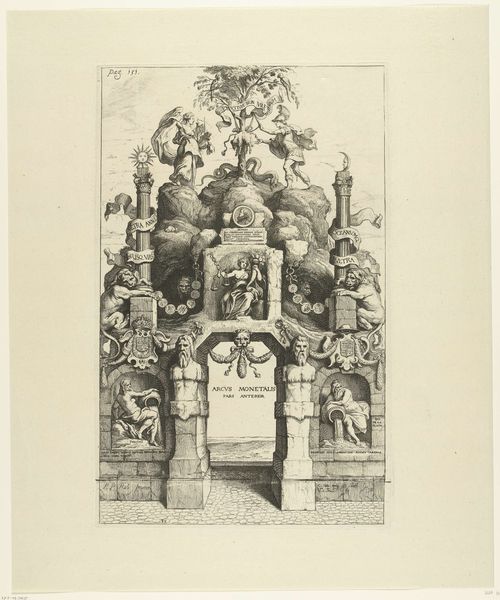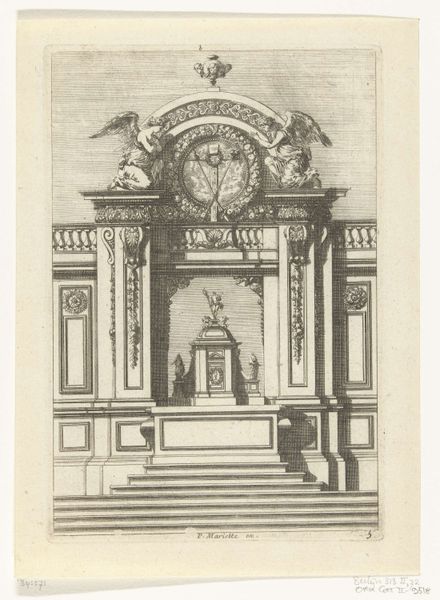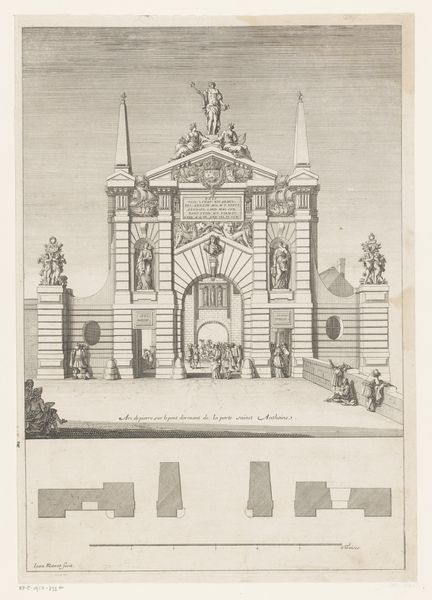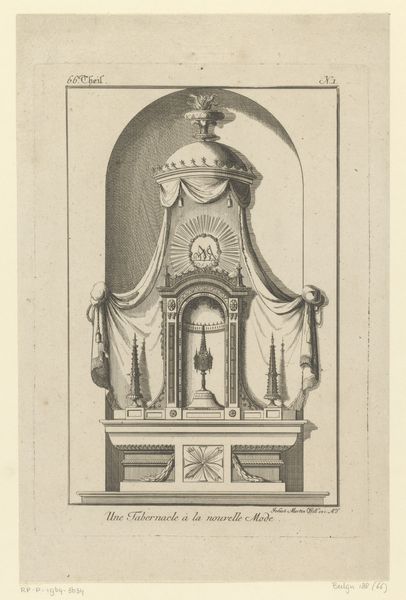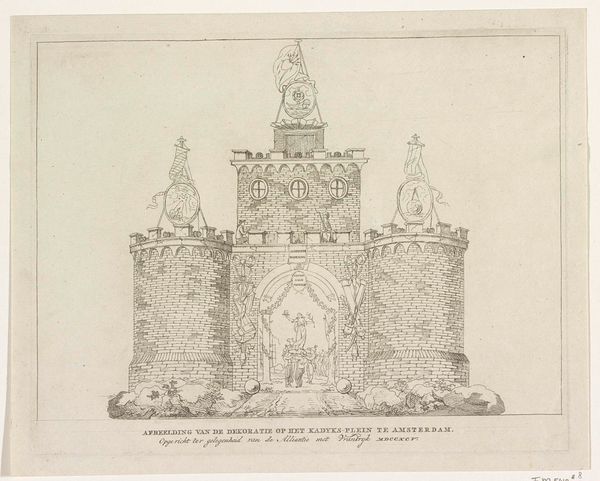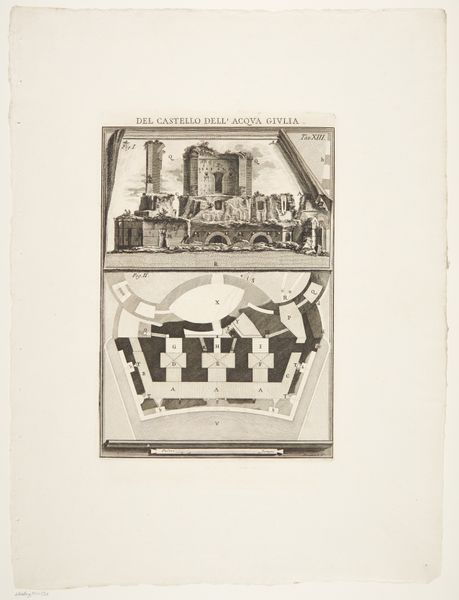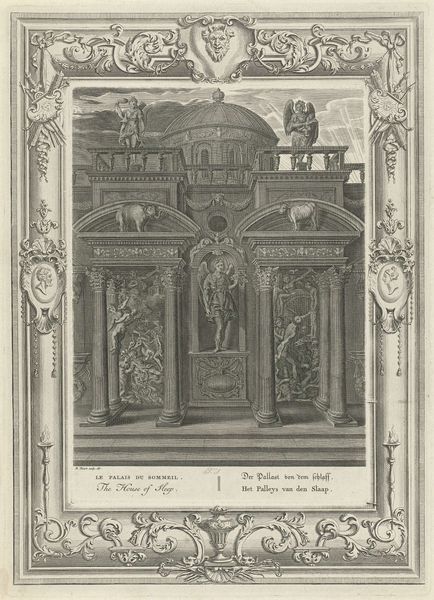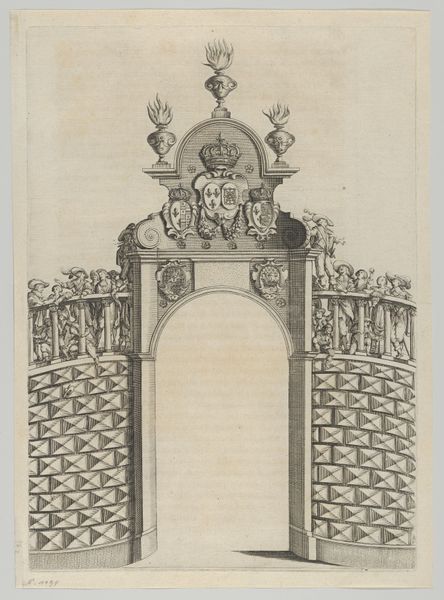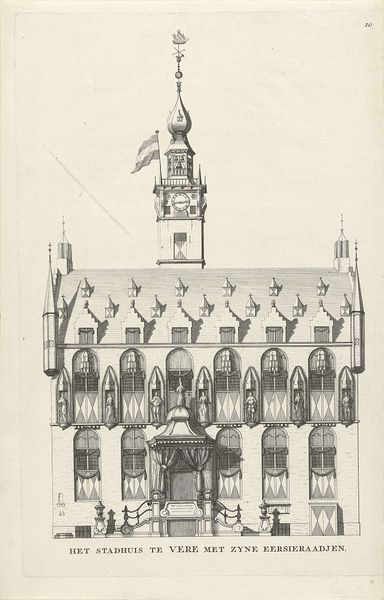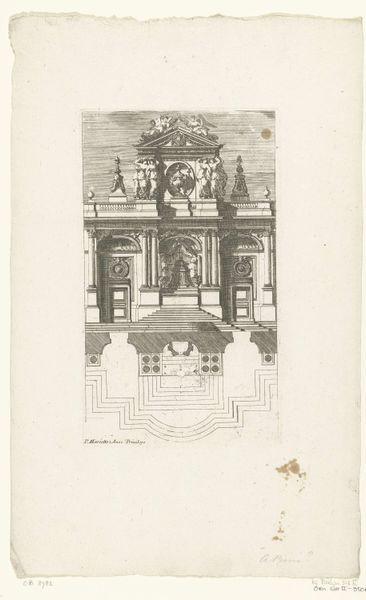
Fontein voor de gevel van het stadhuis bij de intrede van Willem IV en zijn gemalin te Breda op 13 september 1737 1737
0:00
0:00
print, engraving, architecture
#
baroque
# print
#
landscape
#
cityscape
#
history-painting
#
engraving
#
architecture
Dimensions: height 201 mm, width 170 mm
Copyright: Rijks Museum: Open Domain
Curator: This engraving from 1737 is titled "Fountain for the facade of the town hall at the entrance of Willem IV and his consort in Breda on September 13, 1737." Editor: It has an ephemeral quality. The details are so precise but it presents a kind of dreamlike civic scene. The monumentality of the fountain contrasts so oddly with what looks like temporary building materials and stagecraft. Curator: Precisely! This was likely a temporary structure erected for a specific historical event: the ceremonial entrance of William IV and his wife into Breda. Think about the performative aspects of power; these grand displays reinforced social hierarchies, celebrating dynastic continuity and royal authority. This wasn't just aesthetic, it was political messaging. Editor: Visually, I’m drawn to the engraver’s confident handling of light and shadow. The dense, hatched lines create a strong sense of volume, giving the fountain a three-dimensional presence on what is actually a very flat plane. I keep noticing how the formal elements direct my eye—up the tiered structure, from base to the crowning figure. Curator: Note the fountain’s classical architecture and symbolic imagery, pointing to William IV’s legitimacy. Every aspect served a purpose. Also consider who this art was for: primarily the elite who consumed and perpetuated these representations of power. How would the general populace have regarded these carefully managed displays, I wonder? Editor: I like how the hard geometry is softened by these curved fountains spouting out of its higher portions, almost framing it like an arch or halo. The eye can enjoy the complex layers but returns always to the central figure up top. Curator: What interests me here is more than its composition—it’s the intersection of power, gender, and public space within a historical moment. Art, like history, isn't neutral. Editor: Seeing the original setting must have been extraordinary, all pomp and circumstance now faded and existing only as documentation here. This print makes an enduring record of it.
Comments
No comments
Be the first to comment and join the conversation on the ultimate creative platform.
